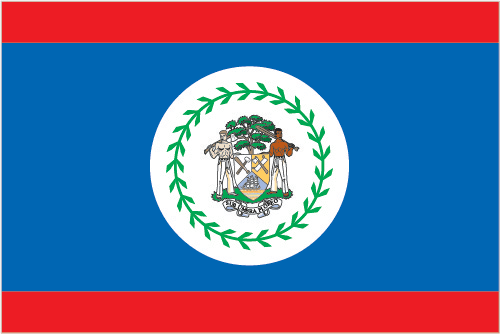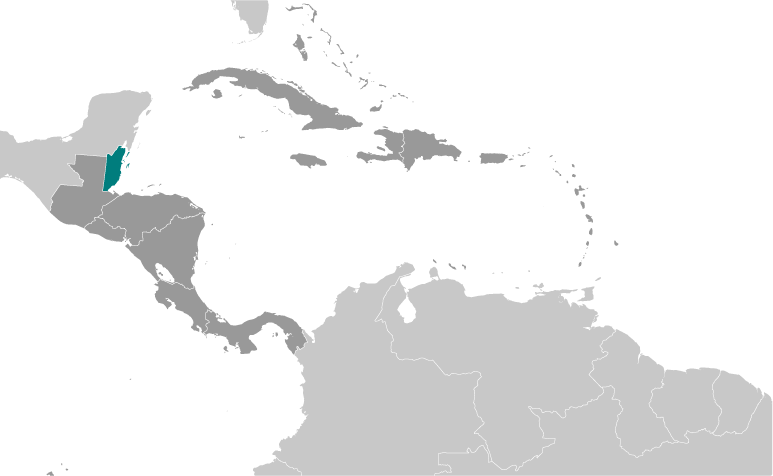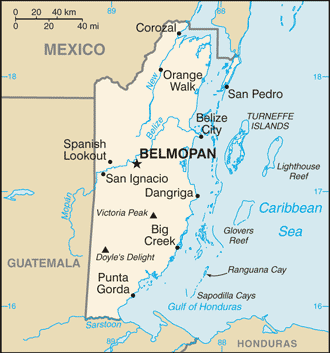|
Nationality:
|

|
|
noun: Belizean(s)
adjective:
Belizean
|
|
|
Ethnic groups:
|

|
|
mestizo 48.7%, Creole 24.9%, Maya 10.6%, Garifuna 6.1%, other 9.7% (2000 census)
|
|
|
Languages:
|

|
|
Spanish 46%, Creole 32.9%, Mayan dialects 8.9%, English 3.9% (official), Garifuna 3.4% (Carib), German 3.3%, other 1.4%, unknown 0.2% (2000 census)
|
|
|
Religions:
|

|
|
Roman Catholic 39.3%, Pentacostal 8.3%, Seventh Day Adventist 5.3%, Anglican 4.5%, Mennonite 3.7%, Baptist 3.5%, Methodist 2.8%, Nazarene 2.8%, Jehovah's Witnesses 1.6%, other 9.9% (includes Bahai Faith, Buddhism, Hinduism, Islam, and Mormon), other (unknown) 3.1%, none 15.2% (2010 census)
|
|
|
Demographic profile:
|

|
|
Migration continues to transform Belize's population. About 16% of Belizeans live abroad, while immigrants constitute approximately 15% of Belize's population. Belizeans seeking job and educational opportunities have preferred to emigrate to the United States rather than former colonizer Great Britain because of the United States' closer proximity and stronger trade ties with Belize. Belizeans also emigrate to Canada, Mexico, and English-speaking Caribbean countries. The emigration of a large share of Creoles (Afro-Belizeans) and the influx of Central American immigrants, mainly Guatemalans, Salvadorans, and Hondurans, has changed Belize's ethnic composition. Mestizos have become the largest ethnic group, and Belize now has more native Spanish speakers than English or Creole speakers, despite English being the official language. In addition, Central American immigrants are establishing new communities in rural areas, which contrasts with the urbanization trend seen in neighboring countries. Recently, Chinese, European, and North American immigrants have become more frequent.
Immigration accounts for an increasing share of Belize's population growth rate, which is steadily falling due to fertility decline. Belize's declining birth rate and its increased life expectancy are creating an aging population. As the elderly population grows and nuclear families replace extended households, Belize's government will be challenged to balance a rising demand for pensions, social services, and healthcare for its senior citizens with the need to reduce poverty and social inequality and to improve sanitation.
|
|
|
Population:
|

|
|
334,297 (July 2013 est.)
country comparison to the world: 177
|
|
|
Age structure:
|

|
|
0-14 years: 35.8% (male 61,118/female 58,665)
15-24 years:
21.1% (male 35,912/female 34,596)
25-54 years:
35.1% (male 59,196/female 58,024)
55-64 years:
4.4% (male 7,374/female 7,407)
65 years and over:
3.6% (male 5,677/female 6,328) (2013 est.)
population pyramid: 
|
|
|
Median age:
|

|
|
total: 21.3 years
male:
21.1 years
female:
21.5 years (2012 est.)
|
|
|
Population growth rate:
|

|
|
2.011% (2012 est.)
country comparison to the world: 52
|
|
|
Birth rate:
|

|
|
26.02 births/1,000 population (2012 est.)
country comparison to the world: 54
|
|
|
Death rate:
|

|
|
5.91 deaths/1,000 population (July 2012 est.)
country comparison to the world: 168
|
|
|
Net migration rate:
|

|
|
0 migrant(s)/1,000 population (2012 est.)
country comparison to the world: 76
|
|
|
Urbanization:
|

|
|
urban population: 52% of total population (2010)
rate of urbanization:
2.7% annual rate of change (2010-15 est.)
|
|
|
Major cities - population:
|

|
|
BELMOPAN (capital) 20,000 (2009)
|
|
|
Sex ratio:
|

|
|
at birth: 1.05 male(s)/female
under 15 years:
1.04 male(s)/female
15-64 years:
1.02 male(s)/female
65 years and over:
0.9 male(s)/female
total population:
1.03 male(s)/female (2011 est.)
|
|
|
Maternal mortality rate:
|

|
|
53 deaths/100,000 live births (2010)
country comparison to the world: 105
|
|
|
Infant mortality rate:
|

|
|
total: 21.37 deaths/1,000 live births
country comparison to the world: 90
male:
23.85 deaths/1,000 live births
female:
18.78 deaths/1,000 live births (2012 est.)
|
|
|
Life expectancy at birth:
|

|
|
total population: 68.28 years
country comparison to the world: 156
male:
66.61 years
female:
70.04 years (2012 est.)
|
|
|
Total fertility rate:
|

|
|
3.08 children born/woman (2013 est.)
country comparison to the world: 55
|
|
|
Health expenditures:
|

|
|
5.2% of GDP (2010)
country comparison to the world: 131
|
|
|
Physicians density:
|

|
|
0.828 physicians/1,000 population (2009)
|
|
|
Hospital bed density:
|

|
|
1.2 beds/1,000 population (2010)
|
|
|
Drinking water source:
|

|
|
improved:
urban: 98% of population
rural: 99% of population
total: 98% of population
unimproved:
urban: 2% of population
rural: 1% of population
total: 2% of population (2010 est.)
|
|
|
Sanitation facility access:
|

|
|
improved:
urban: 93% of population
rural: 87% of population
total: 90% of population
unimproved:
urban: 7% of population
rural: 13% of population
total: 10% of population (2010 est.)
|
|
|
HIV/AIDS - adult prevalence rate:
|

|
|
2.3% (2009 est.)
country comparison to the world: 28
|
|
|
HIV/AIDS - people living with HIV/AIDS:
|

|
|
4,800 (2009 est.)
country comparison to the world: 119
|
|
|
HIV/AIDS - deaths:
|

|
|
fewer than 500 (2009 est.)
country comparison to the world: 82
|
|
|
Major infectious diseases:
|

|
|
degree of risk: high
food or waterborne diseases:
bacterial diarrhea, hepatitis A, and typhoid fever
vectorborne diseases:
dengue fever and malaria
water contact disease:
leptospirosis (2009)
|
|
|
Children under the age of 5 years underweight:
|

|
|
4.9% (2006)
country comparison to the world: 88
|
|
|
Education expenditures:
|

|
|
6.6% of GDP (2010)
country comparison to the world: 27
|
|
|
Literacy:
|

|
|
definition: age 15 and over can read and write
total population:
76.9%
male:
76.7%
female:
77.1% (2000 census)
|
|
|
School life expectancy (primary to tertiary education):
|

|
|
total: 12 years
male:
12 years
female:
13 years (2009)
|
|
|
Unemployment, youth ages 15-24:
|

|
|
total: 19.5%
country comparison to the world: 62
male:
13.8%
female:
28.8% (2005)
|
|
|
|





 )
)



